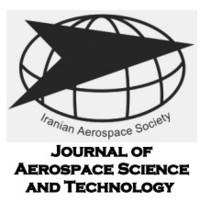- noneedit
- It is my pleasure to introduce this new journal in aerospace science and technology. As we understand, there is little or no forum in this field with an international scope in the region of central and west Asia, and therefore we strongly believe that it will make it possible in the region and in the whole world for better communication among scientists and researchers in aeronautical and astronautical sciences and technologies, and also in all related fields as aerodynami... moreIt is my pleasure to introduce this new journal in aerospace science and technology. As we understand, there is little or no forum in this field with an international scope in the region of central and west Asia, and therefore we strongly believe that it will make it possible in the region and in the whole world for better communication among scientists and researchers in aeronautical and astronautical sciences and technologies, and also in all related fields as aerodynamics and fluid mechanics, thermodynamics and propulsion, combustion and heat transfer, dynamics and control, flight mechanics, design, structures and vibration, aviation management, etc. To start a new submission, please first read the Guide for Authors page for detailed information about manuscript format, style and other requirements. Manuscript submission, refereeing and publishing are completely free of charge. New manuscripts should be submitted online by the corresponding author through the website after registration.edit
Regardless of the initiation or propagation procedure of crack in a gas turbine blade, the precise expectation of the fracture behavior, such as mixed-mode Stress Intensity Factors (SIF), plays a significant role in acquiring its... more
Regardless of the initiation or propagation procedure of crack in a gas turbine blade, the precise expectation of the fracture behavior, such as mixed-mode Stress Intensity Factors (SIF), plays a significant role in acquiring its operational life. Therefore, multilateral three-dimensional fracture solutions are required, including real-based mixed-mode loading (I/II/III) conditions and geometrical considerations. In this study, three-dimensional semi-elliptical crack in a gas turbine blade with various geometrical parameters and inclination angles under mixed-mode loading (I/II/III) conditions were investigated based on the employing finite element techniques and analytical procedure. In this context, the semi-elliptical crack has been considered in the critical zone of the rotating blade to achieve the effect of crack aspect ratio, rotational velocity, crack location, and mechanical properties. Fluid Solid Interaction (FSI) analysis was also performed in addition to solid functional enriched elements. Structural simulation is done at the speed of 83.776 m/s based on CFD simulation. The results indicated that Al Alloys blade shows a profitable resistance in crack propagation. Moreover, as the crack domain is near the location of x/c= 0.25 and 1.9 of crack front, the mode II SIF will be independent of rotational velocity and the blades' mechanical properties. Similarly, for the location of x/c= 1.1 in crack front, the mode III SIF is independent of rotational velocity and blades' mechanical properties.
